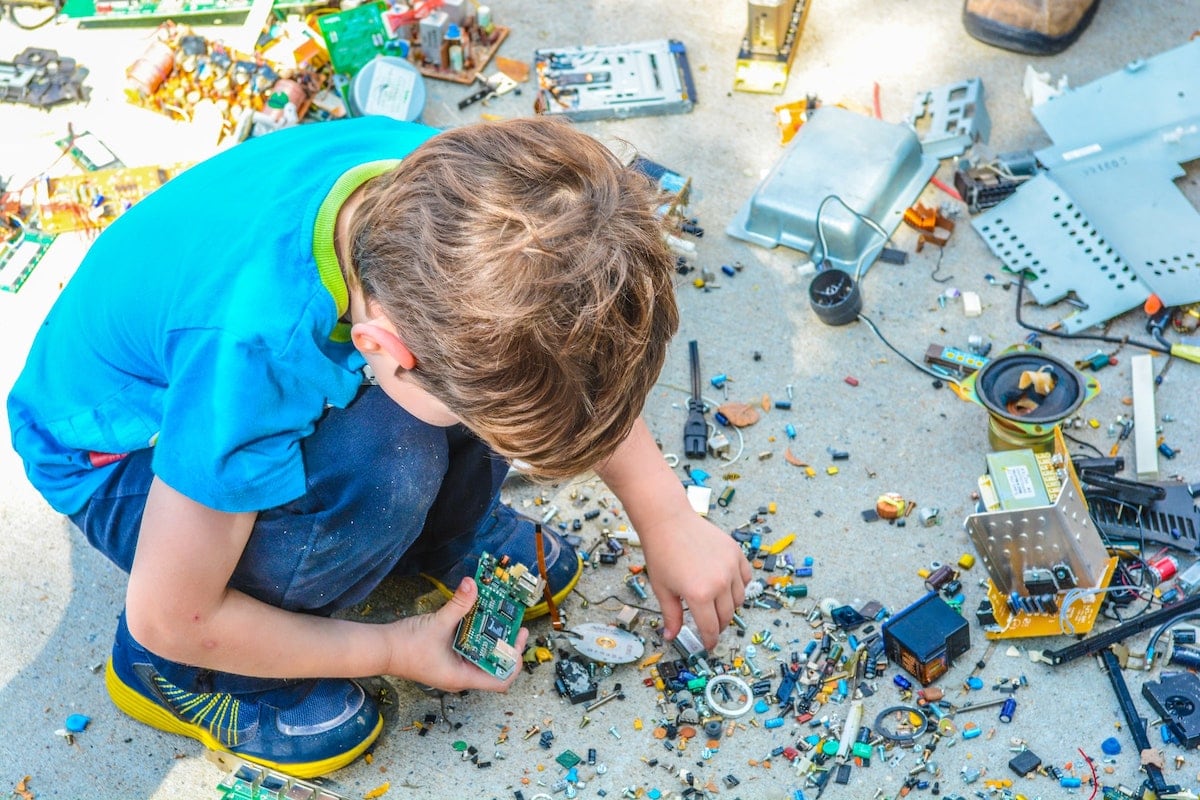Every year, that time rolls around that all parents dread: Science fair project season! No matter how much your child loves science, there is something about this project that hits differently than other school assignments. First, there’s the giant entry packet full of rules, required fields, and examples. Then, there is the more than adequate time allowed to work on (errrr, procrastinate) said project. And, of course, there is the board requirement, which sometimes comes with a speech component as well. We get overwhelmed just thinking about it!
Thankfully, there are a few things you can do to make this essential project easier on yourself and your child. Read on for a few of our favorite science fair project tips. They may seem simple, but one of them just may be a difference maker.
Do Not Procrastinate!

Teachers are not cruel. Thankfully, they typically give us a heads-up that a science fair project is coming, and more than enough time to digest the rules, ask questions, work through a vetted experiment framework, and get started.
What’s the problem with this? Usually, you have at least a month or two from project kick-off until the deadline. It is very easy to delay beginning a project like this when the deadline seems like it is so far out, isn’t it?
Take note of our most critical piece of advice in this article: Get your child started on their science fair project as soon as it comes home. No joke — Don’t wait two weeks, one week, or even a couple of days. Begin talking to your child immediately about what they might like to do, brainstorm project ideas, and help them think through what interests them. And get them excited about it!
One benefit of doing this is you have plenty of time for your child to talk through their ideas with their teacher and ask any questions. They can have the teacher sign off on their testable problem and hypothesis, and even help them work through how their experiment might work. This can take a huge amount of heavy lifting off of us parents. From that point on, all we’re doing is helping them steer down an existing path, not starting from scratch.
Also, by beginning early, you and your child have the ability to break the project into big chunks. Maybe one weekend you determine all the details. The next weekend, head to the library. Then have them open a Word doc and start typing out the basics. (Especially if your child has messy handwriting like ours!)
From there, have them draft the materials list and start thinking through their experiment procedures. If all of this is done in baby steps, it eliminates the weekend torture marathon that a science fair project can be at the last minute. It also puts more of the onus of the project on the child, rather than the parent jumping in and taking over due to the stress of it all last minute.
READ MORE: 10 Science Projects For A Homeschool Classroom
Document with Photos for a Creative Science Fair Project Board

Another way to ensure that the science fair project rolls smoothly is to capture all the details as you go. Photos are one of the best ways to do this. When it’s time to actually assemble the board, you’ll find lots of great ways to use pictures of the materials, steps, and results. This is especially helpful if your child is having trouble thinking of creative ideas, or isn’t fond of art projects.
If you’ve waited until the last minute, sometimes taking photos gets overlooked in the mad dash to get the entire project completed by the deadline. However, if you give yourself adequate time, you’ll even have time to get photos printed, which makes for a more professional-looking board. They can also be put together with ease.
READ MORE: Exploring The World With Science: A Ph Experiment
Follow the Grading Rubric as if Your Life Depends on it

Nowadays, teachers also provide a detailed, grading rubric, especially for big assignments like the science fair project. This is truly your guide to success as you embark on this project with your child.
Typically, the grading rubric includes exactly every item that needs to be included in order to get full grading points on the project. This might include specifications like board and font sizes, and will also likely include the exact fields that the teacher will be looking to see are included. Be sure to pay attention to all of these details. Science fair project packets often include A LOT of information, and it is very easy to overlook the finer details.
Often, there will be a range of points assigned per each item. For instance, if the board includes all the necessary components, it might be worth three points. If it includes all necessary components and is neatly done, it may be worth four points. If it includes all necessary components, is neatly done, and demonstrates creativity, it may be worth five points.
As you can see, this grading rubric is quite literally your child’s roadmap to an A. Follow it carefully, do not skip steps, and when your child is done with their projects, make them go back through the grading rubric step by step to double-check that every single item is accounted for.
We should mention, this article is about keeping your sanity during science projects and helping your child get over the finish line with ease, not winning the science fair. There is another whole article that could be written on what needs to be done to produce a winning science fair project. That requires a different level of thought, effort, detail, and creativity.
READ MORE: Science Clothes For Girls That Are Smart And Bold
While some of the ideas in this article may seem pretty basic, you’d be surprised how easy it is to miss one or two. This is especially true when life gets in the way, and you suddenly find yourself scrambling to wrap up the science fair project the weekend before it’s due.
Instead, take a deep breath, map out a workable timeline very early on, and take small bites of the project here and there. Capture those photos, because you never know when they’ll come in handy later. (And you don’t want to have to re-create them!) Finally, be sure to follow that rubric like your life depends on it. At science fair project time, your sanity certainly does! Good luck!
WANT TO READ MORE?
Once you’re done with the science fair project, take a well-deserved break with Alternative Relaxation Techniques To Focus The Mind, Body & Spirit.
CONNECT WITH DAILY MOM
💖 NEWSLETTER: DAILY READS IN YOUR INBOX 💖
Sign up to receive our picks for the best things to do, see and buy so you can relax and focus on more important tasks! Let us help you be the best version of yourself you can be!
BE SOCIAL WITH US
📌 LOVE IT? PIN IT!📌










































